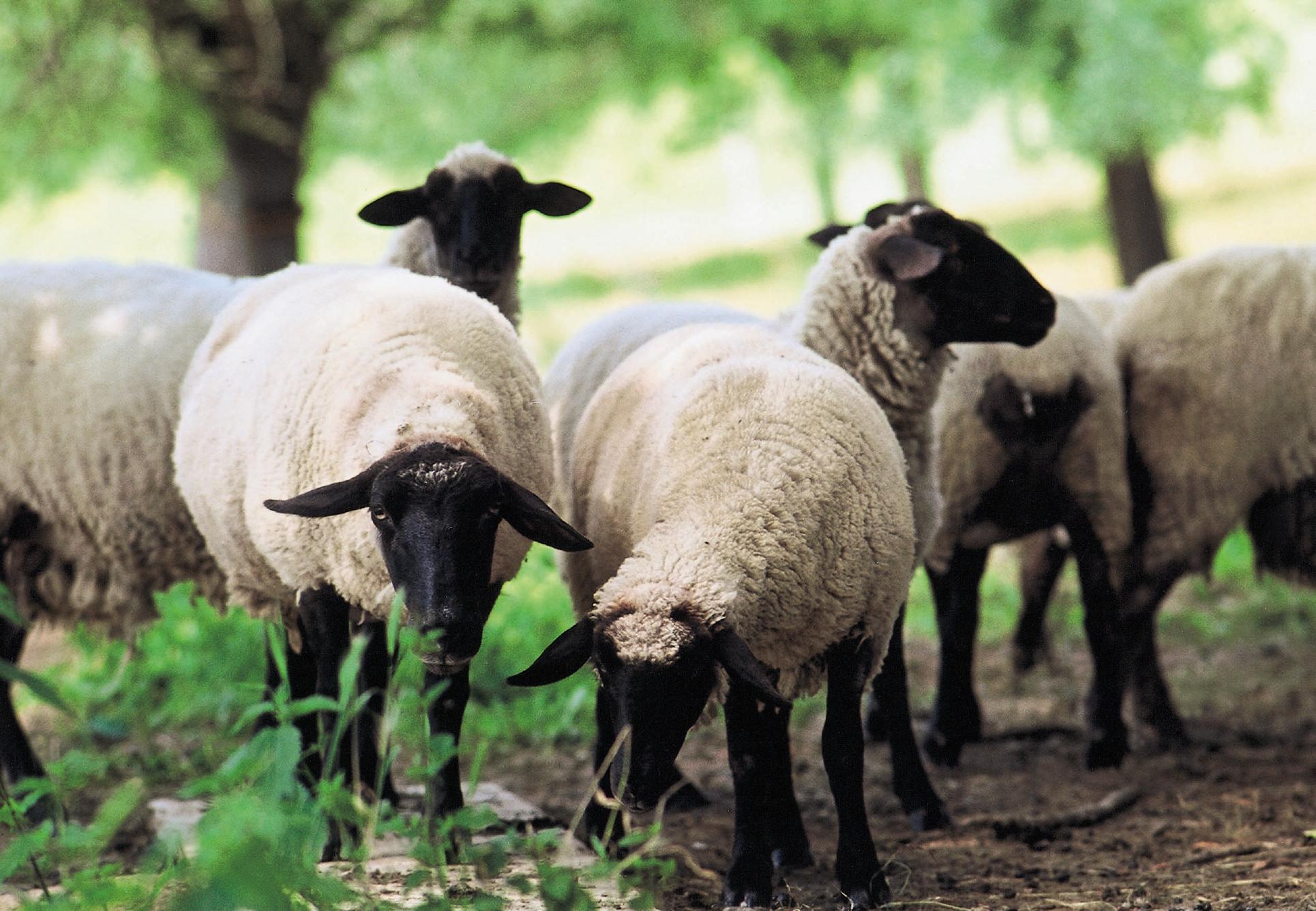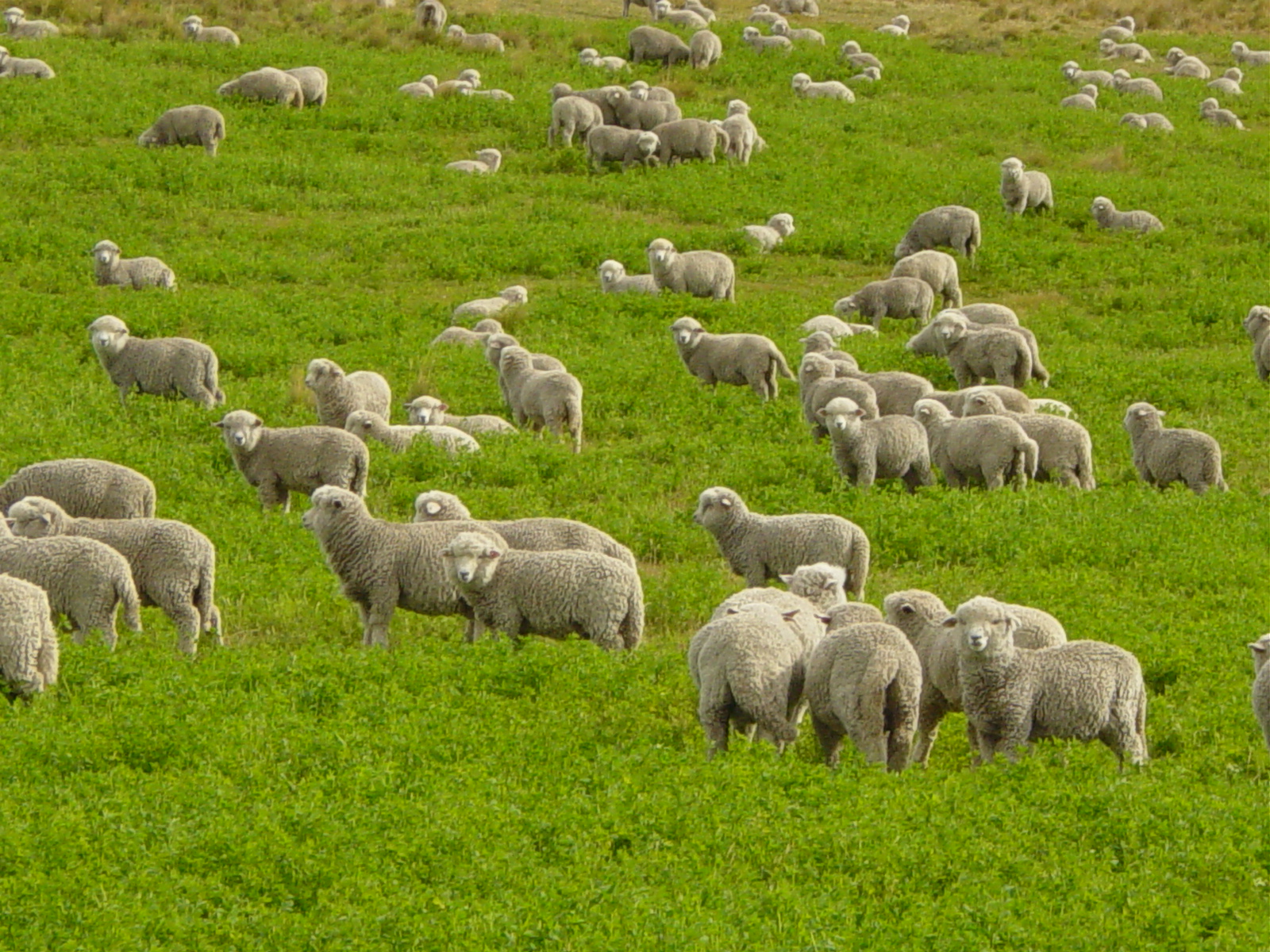

After mating, female sheep have a gestation period of around five months. Mating season, called the rut, happens in the autumn. Male sheep fight for the right to mate with the females and the strongest is usually the only one allowed to mate. The desert bighorn sheep, for example, gets most of its water from eating plants, according to the Natural History Museum of Los Angeles. To completely digest their food, sheep will regurgitate their food into their mouths, rechew and swallow. They typically eat seeds, grass and plants. Like all ruminants, they have multi-chambered stomachs that are adapted to ferment cellulose before digestion, according to the ADW. Sheep are herbivores, which means their diet does not include meat. Dominance is gained when one male submits. Some ram each other at speeds up to 20 mph (32 kph), according to National Geographic (opens in new tab).

Male sheep fight for dominance in their group. Nursery herds can have five to 100 members that include adult females and their young. These herds usually contain five to 50 rams at one time. Males have their own herds called bachelor herds. Sheep are social, but usually only with their own gender. They are found in Asia and the Middle East on grassy terrains with elevations of up to 19,690 feet (6,000 m), according to the ADW. They can live on desert mountains as high as 4,000 feet (1,200 m). Bighorn sheep live in the Rocky Mountain region of North America. Desert bighorn sheep live in Death Valley, California, as well as Nevada, Texas and northern Mexico. Wild sheep also live throughout the world - in the Middle East, Asia, Central Europe and North America - mostly in mountainous areas. Sheep were among the first animals to be domesticated, and they are raised all over the world. (Image credit: Muythaisong Pitakpong Shutterstock) Habitat The urial (Ovis aries orientalis or Ovis orientalis) is the wild ancestor of the domestic sheep. It is 4.6 to 5.3 feet (140 to 160 cm) long and 3.1 to 3.7 feet (95 to 112 cm) at the shoulder. The snow sheep, or Siberian bighorn sheep ( Ovis nivicola), lives in eastern Russia, according to the Ultimate Ungulate website. Males are from 4.2 to 5.9 feet (130 to 180 cm) in length females are 4.3 to 5.3 feet (132 to 162 cm). Males have massive flaring and curling horns, but females have slender horns. They are the only thin-horned mountain sheep.

(14 kg).ĭall's sheep ( Ovis dalli) live in Alaska and the Yukon. Bighorn rams have massive horns that weigh more than all of the bones in their bodies, about 30 lbs. Males are typically 5 to 6 feet (160 to 180 cm) long, head to tail females are about 4.9 feet (150 cm), according to the ADW. There are approximately 900 different species of sheep in the world.Bighorn sheep ( Ovis canadensis) of the Rocky Mountains are similar in size. The act of breeding sheep is known as Tupping. Some of the more popular cheeses made from their milk are Feta, Pecorino, and Manchego.ĭuring the first world war, President Woodrow Wilson had a flock of sheep that he used to trim the lawns at the White House! Sheep’s milk is often used to make cheese. Studies have shown that around 8% of all male sheep are attracted to the same gender. Lamb has the lowest cholesterol of all the red meats. If a sheep were to be put on its back, it would be unable to get back upright! To make one tennis racket, the small intestines of eleven sheep are needed.

In Scotland, theft of a sheep is still a hang-able offense! The sheep industry began in central Asia over 10,000 years ago! When giving birth, most Ewes give birth to twins. Sheep prefer to drink from running water, instead of water from a trough. The Ancient Greeks used to use the bones of sheep for dice. This allows the sheep to see behind themselves – without having to turn their head! The eyes of a sheep are placed on its head in such a way that they have a field of vision of around 300 degrees. In 1996, a sheep called “Dolly” was the first mammal ever to be cloned from a somatic cell. If a Ram has been castrated, it is often called a Wether.Ī group of sheep is known as a flock, herd, or mob. There are over 1 billion sheep in the world!Īdult males are called Rams, whilst adult females are called Ewes. Here we have a list of 20 super facts about sheep!įind out the most interesting facts about sheep, which include Dolly – the cloned sheep, homosexual sheep, and what sheep milk is actually used for!


 0 kommentar(er)
0 kommentar(er)
